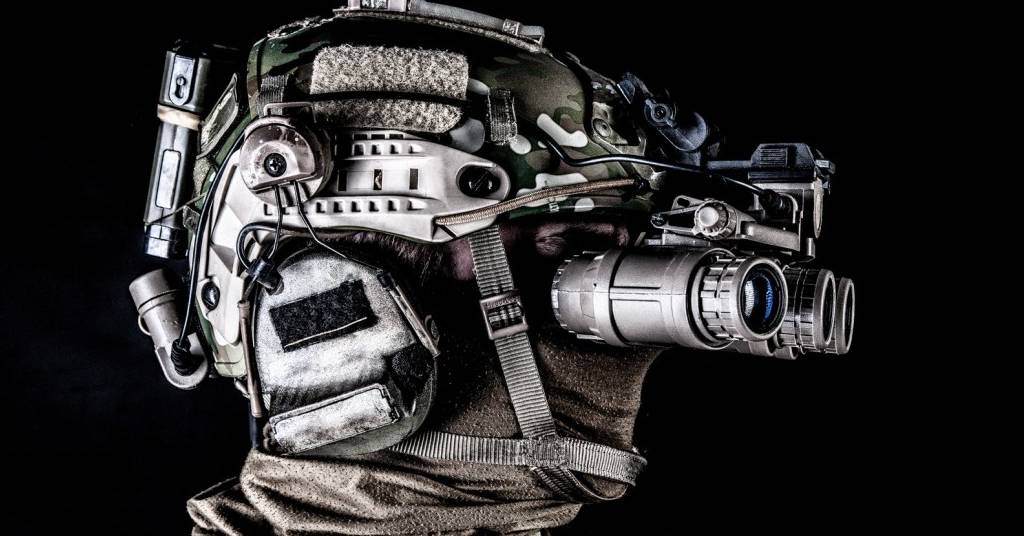I have written countless of reviews on tactical gear products in the past and as I began to prepare myself to write about the topic of best night vision goggles, I knew coming in I was in for one of the most difficult tasks since I first started doing these write-ups.
The reason, well, it is fair to say, there is no other product-line in the tactical gear universe, quite as high-tech as all “night-vision” devices.
Night vision, as the name implies, is as close you can get to being a science in its own right.
No matter what, if you think about it, whenever we try to look at objects in the dark, we are defying the laws of nature.
Simply put, while humans are born with all kinds of ingrained resources and adaptations to deal with their surroundings and the environment, being able to see in the dark is not one of them.
Then again, one of man’s greatest assets throughout history has been its ability to defy and challenge his limitations, his shortcomings, and “night-vision” is, you may say, [the] quintessential, the archetypal example of such defiance, to where the technological advancement in the field of night vision, as seen throughout the past years, has been one to make it possible for our species [humans] to actually see in the dark almost as good as we do in daylight time – an amazing feat if you ask me.
Now, as I move forward in this review today, I must caution you all, I do not consider myself a “techie” - a person who is an expert in or enthusiastic about technology.
Consequently, my approach today will not be so much focused on the technical or technological aspects of the subject matter as will be with the practical aspects of some of the night vision devices available in the marketplace today.
That said, however, I will try my best not to let my obvious lack of scientific expertise compromise in any way, shape, or form some of the valuable information that I want to share with you to make your life easier when purchasing a night-vision device.
In a Rush? Here's The QUick List:
What are Night-Vision Goggles?
So, in the most uncomplicated way I can think of, a night-vision device [NVD], also known as night optical/observation device [NOD], and night-vision goggle [NVG], is a device that allows images to be produced in levels of light approaching total darkness.
The image may be a conversion to visible light of both visible light and near-infrared. Infrared (IR), sometimes called infrared light, is electromagnetic radiation (EMR) with wavelengths longer than those of visible light.
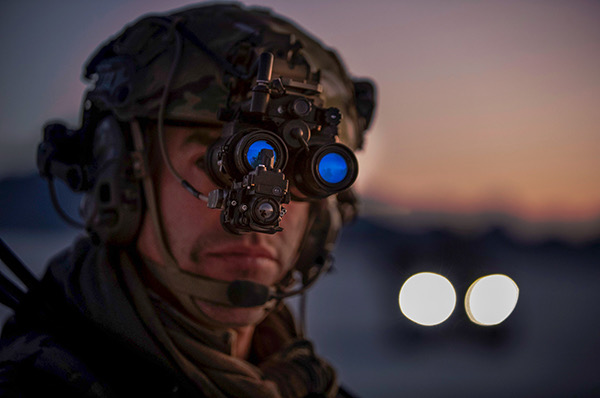
It is therefore invisible to the human eye.
The image produced in night-vision devices is typically displayed as a monochrome green, only because it is the easiest color to look at for prolonged periods of time in the dark.
I should point out that most all NVD’s were originally used by the military and by the law-enforcement communities, but nowadays they are readily available for civilian users as well.
How Night Vision Optics Work
Again, notwithstanding my limited technical expertise, as mentioned before, I do not think it is possible or fair to do a review on night vision devices without, at the very least, sharing some of the very basics on how these systems work.
In the simplest way I can think of, the basic principle behind all night vision technology is that ambient light enters the device, hits a surface that senses that light, called a “photocathode,” which in turn converts that light to electrons.
The electrons are amplified or magnified by a “photomultiplier.”
PhotoMultiplier Tube, image courtesy of Wikipedia
The output from the photomultiplier goes to a phosphor screen, much like a cathode ray in televisions used to work, that is, displaying an intensified image of the light that originally entered the photocathode.
In practice, the protocol I just described is more complex, but, honestly, I do not want to go there just now.
For this review, suffice it to say that night vision devices require the presence of various optic elements which allow for the resolution of various focal issues.
There are alignment issues, voltage regulation, power supply elements and gating elements issues – all meant to adjust for rapidly changing ambient light.
Gating, as used in the context of night vision devices, is a feature of intensifier tubes where the amount of light reaching the intensifier is automatically gated or measured, so that bright lights do not damage the device.
Gating is key in situations where there may be sudden changes in the abundance of light in the environment.
For now, it is not necessary to go any further in understanding how all these elements interact, but it is helpful to, at least, have a basic understanding of these systems if you are getting ready to buy a night vision device.
I² Systems
There are two primary types of night vision systems:
- the image intensifier tube devices
- the “infrared [thermal] devices.
Both these systems are better known in the industry as “I²” devices, however many folks mistakenly relate all I² systems exclusively to image intensifiers.
As implied by their name, image intensifiers, take available light, and intensify it.
Some of the latest I² systems can work in pitch darkness. Infrared systems, on the other hand, measure the difference in heat to produce an electronic image of what is radiating the heat.
History – The Generations
Night-vision devices first came into use in World War II and, and into wider use later in the Vietnam War.
The technology used in night vision devices evolved so dramatically since their introduction that it led to it being classified into several “generations” of night-vision equipment with each generation showing remarkable improvements in efficiency coupled, thankfully, with price reductions as well.
Nowadays, night-vision devices are available for a wide range of uses and applications – some at affordable price points compared to earlier generations.
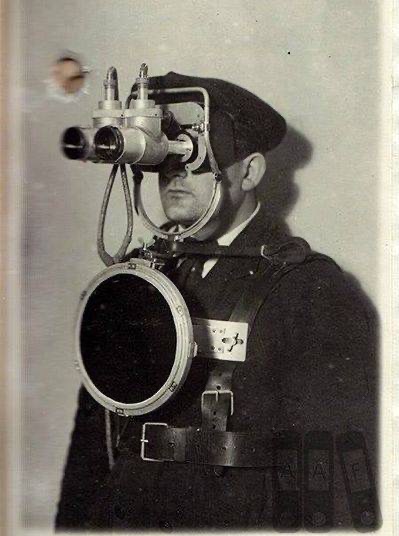
Early Night Vision Goggles Produced By Russia
Generation 0
As night vision devices developed throughout the years, the complexity of the evolution demanded for a periodization or labeling protocol relative to the various stages of development; stages capable of differentiating the systems in some logical manner consistent, principally, as it related to technical and/or technological developments.
Under this periodization, night vision devices made prior to the end of World War II were labeled as Generation “0.”
Generation 1
First-generation passive devices were developed in the 1960’s and introduced during the Vietnam War.
They were patented by the US Army and were an adaptation of the earlier version of Generation 0, relying on ambient light instead of an extra infrared light source.
While image intensification was improved, the disadvantages included their bulkiness and the fact that they required moonlight to function properly.
Generation 2 [GEN II]
Second-generation devices were developed in the 1970’s, featuring improved image-intensifier tubes which, in turn, resulted in a much brighter image, especially around the edges of the lens.
This led to increased illumination in low ambient-light environments such as moonless nights.
Also improved in this generation were image resolution and reliability.
Generation 3+ (GEN III OMNI IV–VII)
So, this category can get very, very technical and I am not going to go there.
Suffice it to say, generation 3 and beyond are state-of-the-art devices with impressive features and performance capabilities.
Notwithstanding the remarkable improvements on the GEN III OMNI IV–VII components, as of 2021, the US Army Night Vision and Electronic Sensor Directorate [NVESD] has not yet authorized the use of the name Generation 4 [GEN IV] for these components.
One of the most prominent features developed in the 2000’s that distinguish the GEN III OMNI IV–VII from earlier generations, has to do with an automated gated power supply which regulates voltage, allowing the NVD’s to instantaneously adapt to changing lighting conditions.
Curiously, while the United States military describes these systems as Generation 3 or GEN III OMNI IV–VII, the consumer market classifies this type of systems as Generation 4.
Figure of Merit [FOM]
So, by 2001 the United States federal government concluded that tube’s “generation” should not be a determinant factor of a tube’s global performance, making the term “generation” irrelevant in determining the performance of an image-intensifier tube, once at center stage of the labeling and classification protocol.
As such, the term [generation] was eliminated as a basis of export regulations.
Beginning in 2001, the US implemented a new figure of merit [FOM] system for determining the release of night vision technology. FOM is an abstract measure of image tube performance.
Legality
One of the most frequently asked questions I get on night-vision goggles is about their legality.
Are night vision goggles legal?
My short answer is yes, they are.
That said, however, there are a variety of factors that come into play as to when and where you can use NVD’s and for what.
In the US, it is completely legal to buy and own night vision goggles and thermal imaging devices.
In California, however, there are some laws regarding illegal sniper scopes, but that is the extent of the limitations.
This law states that, it is illegal to own any contrivance, be it a device or attachment that has been designed for or appropriately adapted to be used in conjunction with a firearm.
Moreover, the law is applicable if the devices provide and project an infrared [IR] light and works in combination with an electronic telescope which allows the user to visually locate and identify objects at night.
The issue then becomes, can you hunt using night vision devices?
So, my most responsible answer on this subject is, as much as there is not any control over the purchasing and ownership of night vision goggles in the US, you will find that there are rules, laws and regulations about hunting which vary from state to state.
If you are a hunter wanting to use an NVD, I strongly urge you and suggest that you get your answer to this crucial question by contacting the relevant Department of National Resources where you intend to do your hunting – doing so will prevent you from getting into any legal problems, which you really do not want or care for.
What to Look for When Buying Night Vision Goggles
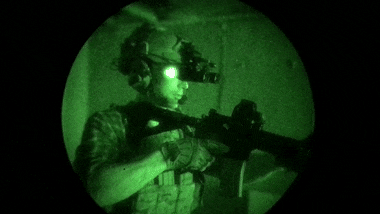
So, you have made up your mind to buy night vision goggles, haven’t you?
That is great, but there are some important, sometimes critical considerations before you go to your local Night Vision Store.
Unlike binoculars, monoculars, and most telescopic sights, night vision goggles have no magnification, thus the “1x” in the magnification specs of all night vision goggles.
This is essential for moving on foot or driving a vehicle as night vision goggles can estimate the distance of a visible object.
The second most useful application of night vision goggles is when shooting a weapon with a compatible sight or laser [infrared IR] for hunting.
That said, however, there are several important considerations that you must give when purchasing night vision goggles.
Following, I am listing some of these considerations.
Generations
As I mentioned before, intensifier tubes are divided into generations.
The highest quality, contrast, and sharpness of the image intensifier tube is provided in third generation systems and beyond.
Bottom line, the more modern converter designs, the better the image quality and optical performance.
That said, the difference in cost of the devices using more modern technology is significant.
Word of caution.
Do remember that night vision devices use an electronic converter which, simply put, amplifies weak lights many times over.
Night vision goggles, as any other devices based on image intensifier tubes, do not allow you to see in absolute darkness – only if there is at least some light in the environment.
On this basis, one of your most important criteria when purchasing your night vision goggles is to define your mission, which includes but it is not limited to some of the following:
- Night photography and video shooting
- Military use and special operations
- Patrolling
- Air and Sea Navigation
- Hunting and Animal Watching
Resolution
In night vision goggles devices, the resolution is a parameter which characterizes the ability of the device to display two close points or lines separately.
Typically, resolution is defined in dashes per millimeters [lpm].
The higher the resolution, the clearer the image that can be seen by the user.
Magnification and Field of View
Unlike binoculars and monoculars, night vision goggles are not capable of magnifying an image per se.
However, generically speaking, magnification provides the widest possible field of view, which in many instances can be an important consideration.
Spectrum
Night vision goggles increase the brightness of objects thousands of times.
This is measured in nanometers as defined by the International Bureau of Weights and Measurements using the symbol “nm.”
The UV range extends from 100 to 400 nm, while the near UV range nominally extends to the lower limit from 300 to 400 nm.
The visible part of the spectrum can be expanded significantly and extended from 400 to 750 nm.
Batteries
So, night vision goggles depend on their own source of energy, in our case, most often lithium batteries.
Makes sense that the longer the battery life of your device, the more you can rely on your system without having to change batteries and/or the less likely your goggles will suddenly be out-of-order due to a failing power supply source.
Weight and Size
One of the most important yardsticks I am always advising to friends who have decided to purchase night vision goggles is for them to pay special attention to the size and weight of the device, which, as you can imagine, typically go hand in hand.
The larger the size the heavier the device and vice-versa. Just remember, the devices will be worn on your head all the time and, I can guarantee you, excessive weight will invariably make you feel outright uncomfortable.
Cost
Yes, like anything else you buy, there is that issue of price-point, isn’t there?
Only thing is, as far as night vision goggles are concerned, price point can be a major consideration, as costs for these systems can be all over the place – from low prices to uniquely soaring prices and everything in between.
My best advice to anyone in the market for night vision goggles is simply to first assign yourself a budget and take it from there.
As everything else, the higher the price, the higher the quality and number of features that you can expect and vice-versa.
That said, however, there are quite a few very affordable and good systems in the marketplace nowadays.
Later in this review, I will be referring to some of these systems.
Best Night Vision Goggles – Our Top Picks
QUick List
Note: Top picks do not use cost or price-point as a determining criterion. While thus far I have focused my review exclusively on Night Vision Goggles [NVD’s}, in my top picks below, I have also included Binoculars and Monoculars, which I thought you may want to also include in your purchasing considerations.
I – Night Vision Goggles
1. Nightfox Swift Night Vision Goggles
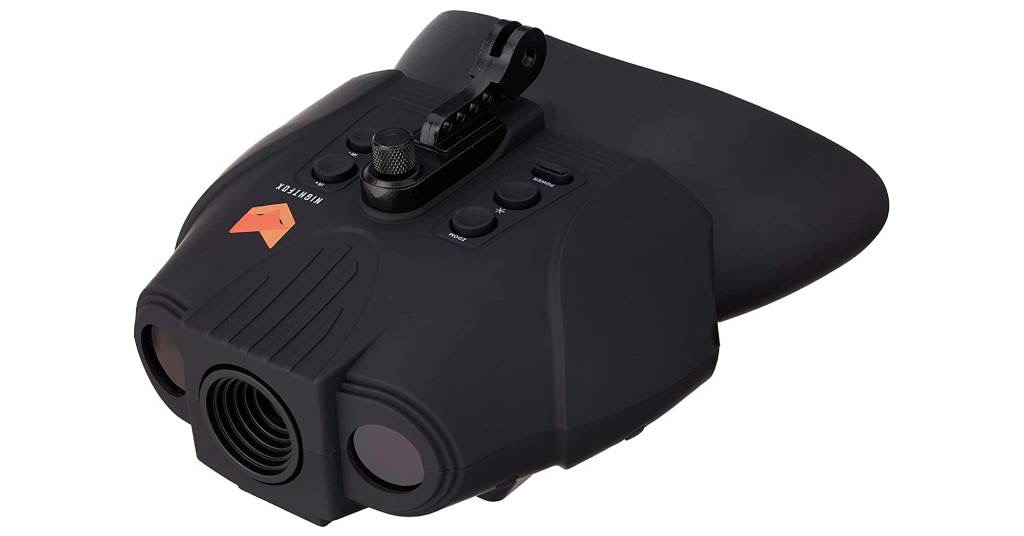
Nightfox Swift Night Vision Goggles
Specifications
ConClusion
The Nightfox system is designed to be used with a supplied head mount with no additional magnification capability – simply for seeing in the dark.
System uses its own 840 nm infrared IF LED as its illumination source and a built-in digital camera to create the image, giving a maximum range of 70m [76 yds.]
The Nightfox uses a rechargeable battery with a duration of 90 minutes to three hours depending on the level of brightness of your choice.
While the resolution is not especially high and the angle of view is a tad narrow, this is an excellent entry-level system for the price.
2. AGM Global Vision Wolf-7 Night Vision Goggles
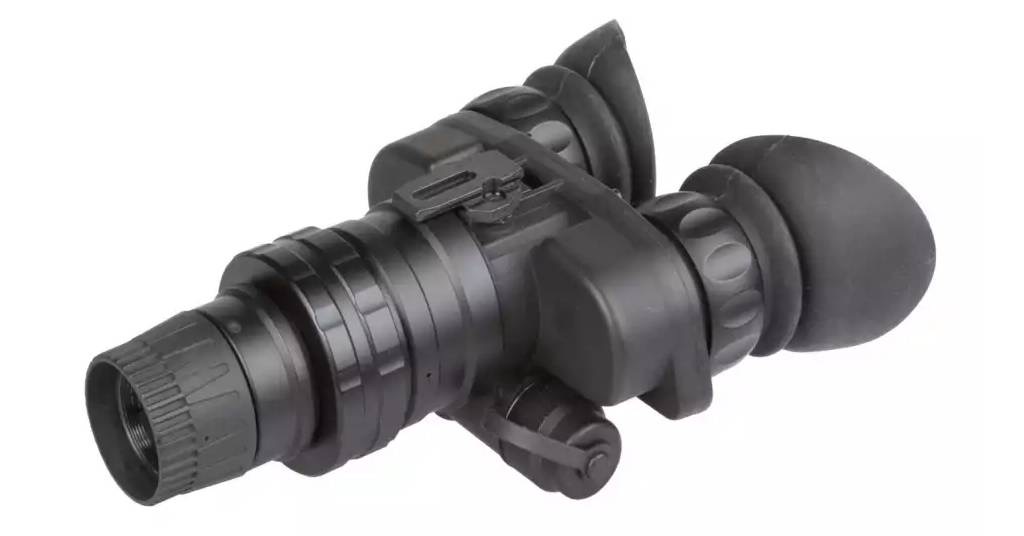
AGM Global Vision Wolf-7 Night Vision Goggles
Specifications
ConClusion
This system is a bi-ocular NVG featuring high quality optics and exceptional dependability.
Offers bright, clear images. As specified, they are available in Generation 2 and Generation 3 tubes.
These goggles offer impressive performance for its price-point.
The system allows you to add multiple lenses to enhance the magnification up to 5x.
The AGM systems are lightweight, compact, and waterproof, excellent for use in multiple applications.
The automatic bright light cut-off is great for extended battery life.
Highly recommend you give this one consideration before making your final decision.
3. Nyte Vu NV60 Night Vision Goggles
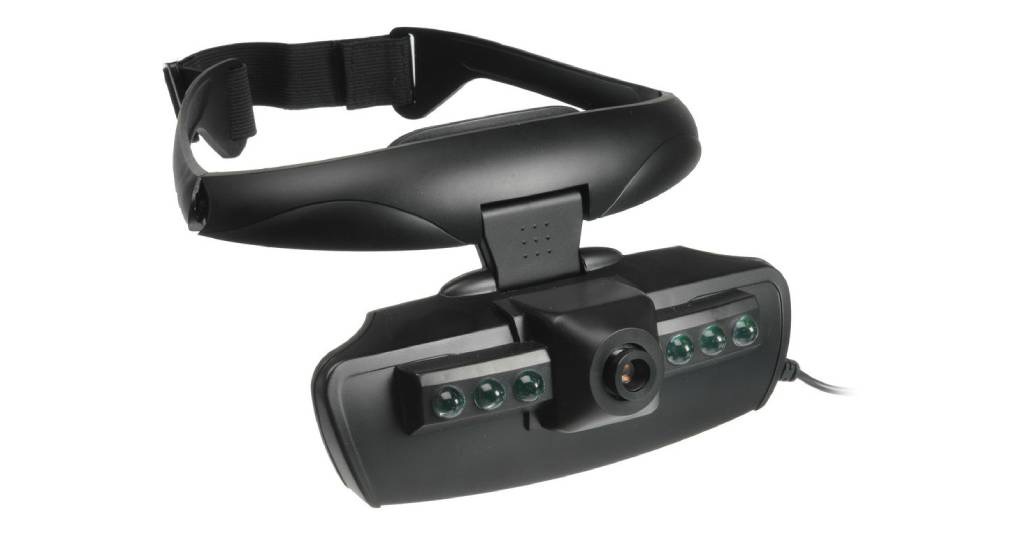
Nyte Vu NV60 Night Vision Goggles
Specifications
ConClusion
The Nyte Vu NV60 system uses a CCD Sensor - a silicon-based multi-channel array detector of UV, visible and near-infrared light, used to capture the field of view and output the video feed to an LCD screen in the eyewear.
This system claims to let you see up to 200 feet in total darkness and up to 1000 feet in moonlight.
It comes powered by a 12V rechargeable battery.
While I like the Nyte Vu NV60, I warn you, they can be hard to get in certain countries such as the UK and Europe.
II – Night Vision Binoculars
1. Rexing B1 Night Vision Binoculars
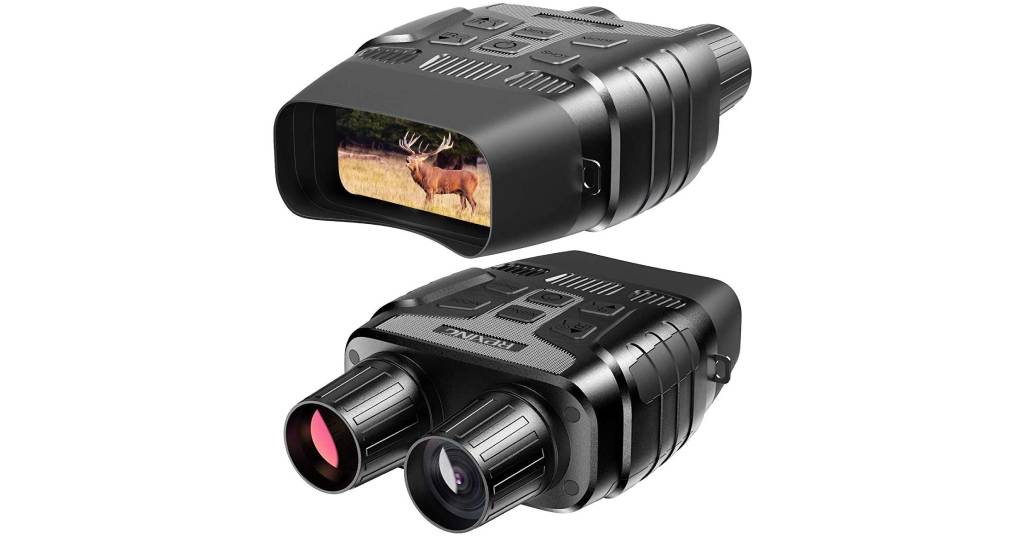
Rexing B1 Night Vision Binoculars
Specifications
ConClusion
The Rexing B1 binoculars are great for spotting wildlife at night.
The optical system is built to ensure good light transmission and a strong image capturing capability.
This system was designed to capture 1280 x 960 pixels video and 1MP stills, that are saved to a microSD card up to 32GB. You must buy the card separately though.
The Rexing B1 can be mounted to a tripod.
They also feature water-resistance protection which allows you to use these binoculars even in the rain.
My only complaint is the fact that the batteries are not rechargeable.
Other than that, pretty good, I think.
2. Solomark Night Vision Binocular
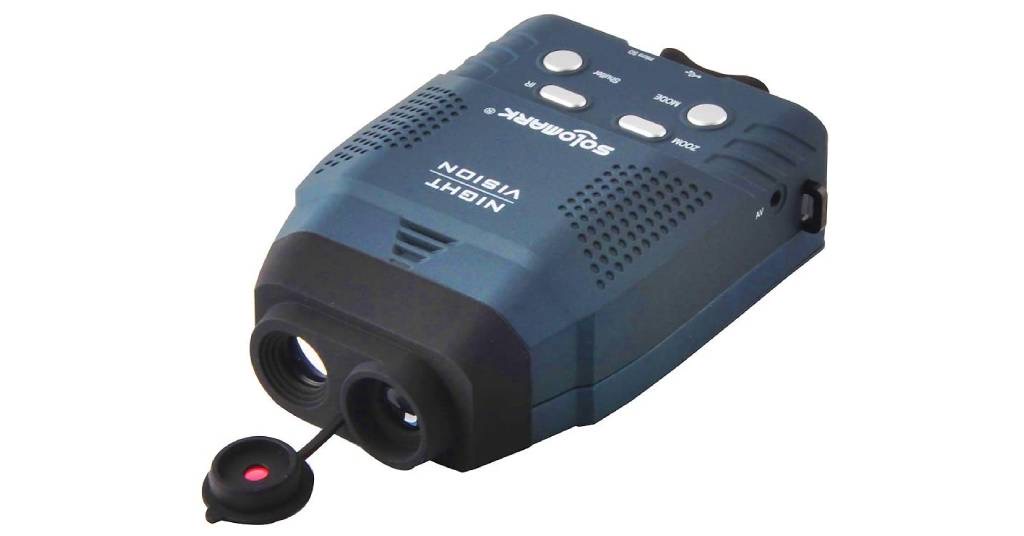
Solomark Night Vision Binocular
Specifications
ConClusion
The Solomark binocular is pricey, but they have an infrared illuminator that enables viewing at a range of 400 meters.
It also features a 4-inch viewscreen plus 7x magnification and 31mm objective lens size.
Uniquely, a 4GB microSD card is provided in the package.
This system was designed to capture 1280 x 720 pixels at 30fps.
The Solomark comes with AV cable plus USB cable for connecting to a TV or a PC.
3. Nightfox 110R Widescreen Night Vision Binocular
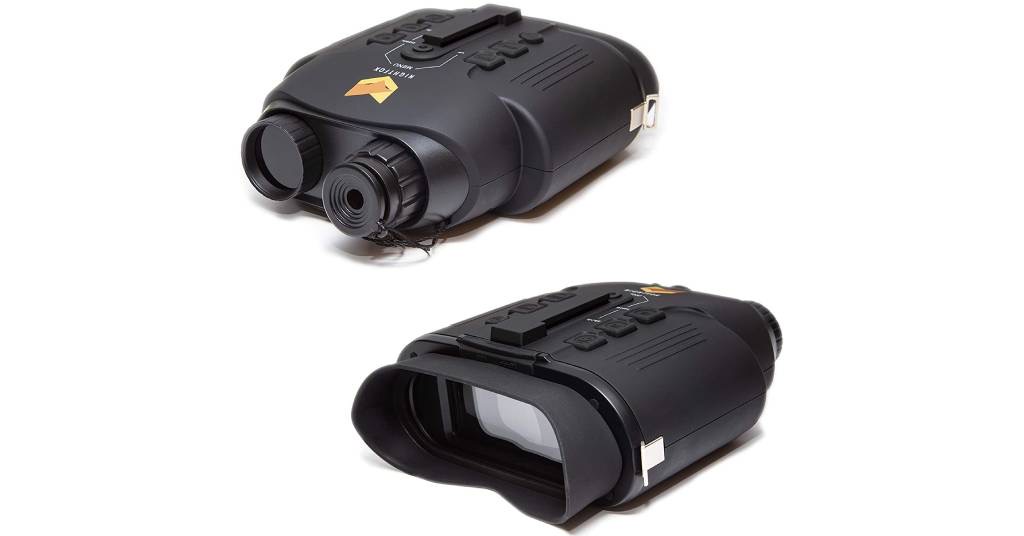
Nightfox 110R Widescreen Night Vision Binocular
Specifications
ConClusion
Must say, this pair of binoculars may not offer what my other choices offer, but they are inexpensive, so it offsets some of its limitations.
The 7x magnification is not particularly bad and, like the other models, it can record to an SD card at a resolution of 1280 x 960 pixels.
I am listing this one as one of my favorites only for the budget-minded among you.
III – Night Vision Monoculars
1. Bushnell Equinox Z1 6 x 50 Night Vision Monocular
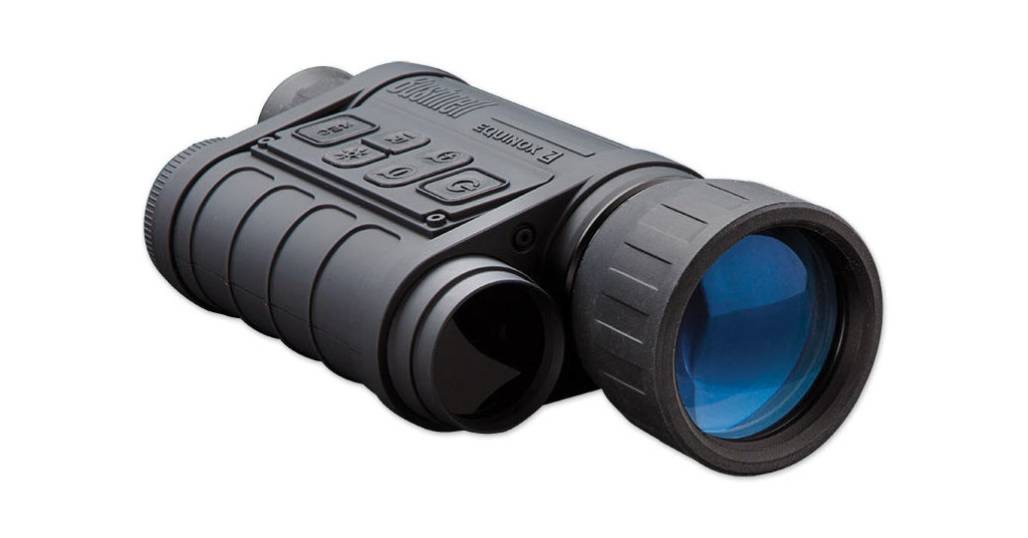
Bushnell Equinox Z1 6 x 50 Night Vision Monocular
Specifications
ConClusion
The Equinox monocular comes with a 6x magnification bigger than most of its counterparts.
It also has an effective light-gathering tool in a 50mm lens.
A built-in IR illuminator enables its users to view long-range subjects during day or night.
The system has respectable video capturing capabilities with full HD 1080p resolution.
The Equinox can magnify objects over 1000ft away.
On the downside, the batteries can run dry quickly.
Still, it's worth checking it out.
2. ATN PVS14-3 Generation 3 Night Vision Monocular
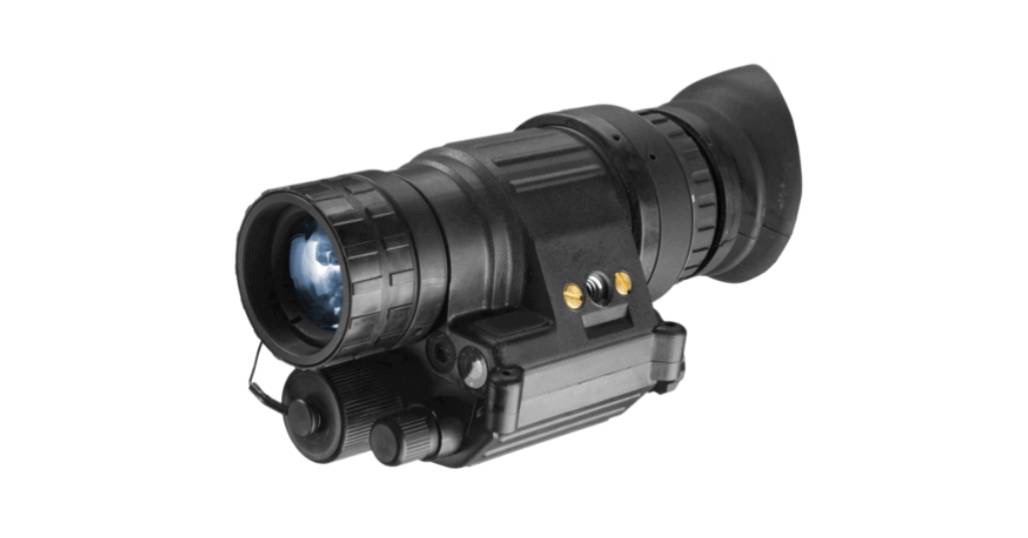
ATN PVS14-3 Generation 3 Night Vision Monocular
Specifications
ConClusion
The ATN PVS14-3 monocular features technology that was inspired by the US military.
The ATN PVS14-3 has advanced image intensifying tubes that ensure ideal illumination in dark conditions.
Included in this Generation 3 package is a wide FoV angle along with a variety of accessories which include a carrying case, a helmet, a mounting assembly, and sacrificial windows, among others.
This system has longer eye relief than most of its counterparts and the optics come with Proshield coating to ensure durability and long-lasting performance.
One of the most desirable features for me was that you can use these goggles with your hands and/or mount them on your head for hands-free use.
They are also fully adaptable for camera and video applications.
3. SiOnyx Aurora Sport Night Vision Monocular
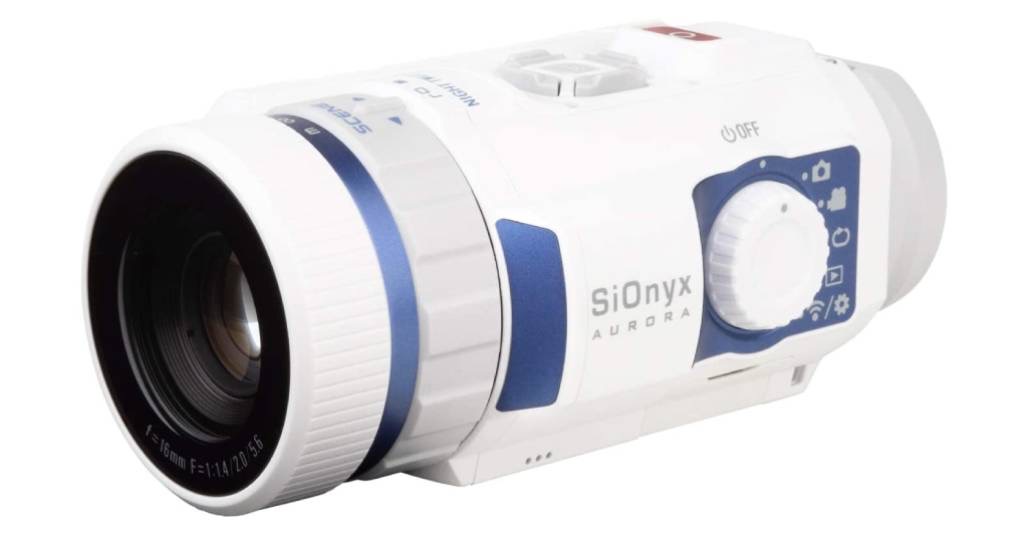
SiOnyx Aurora Sport Night Vision Monocular
Specifications
ConClusion
The SiOnyx Aurora Sport has an affordable price-point.
With a 1-inch CMOS sensor, this system can record 720p color videos after dark.
Originally designed for marine use, it is fully water-protected.
It boasts a 3x digital zoom and it is designed to be able to pick-out a man-sized target at 150m in near moonless starlight.
I strongly recommend the SiOnyx Aurora Sport to all the boating enthusiasts out there.
Summary & Conclusion
So, as a point of reference, I just want you to know, with the sundry advancement and evolution of night vision technology, there is just an immense amount of night vision devices variations and related accessories out there, much to broad for anyone to dare try and cover it all in a single review or write-up such as this one.
My humble review today, barely scratches the surface of this unique and extensive product line within the tactical gear universe.
Given the overwhelming number of variables that you are dealing with when purchasing a night vision device, it is all that important that you narrow down your options as much as possible, as otherwise you are guaranteed to risk throwing your money out the window.
If you have read any of my previous reviews on other tactical gear products, the one common principle which I think applies to most all products in this field is defining your mission – ever so true when it comes to night vision devices.
Remember please, night vision gear can run anywhere from a few hundred dollars to thousands of dollars.
So, the first thing you want to do is to define precisely what are your needs?
Will you be hunting? Hiking? Boating? Tactical purposes? Military? Surveillance?
Trust me, knowing the answer will narrow your options, which can only help you make the right decision before and not after-the-fact – the latter, a risky and costly mistake, which you do not really want.
Once you have made up your mind as to how you intend to use your NVD, your next most sensible priority is setting yourself a budget or price range which is commensurate with your financial capability.
No sense, if you ask me, to wander around looking at systems which are beyond your means.
Fortunately, as I mentioned before, the proliferation of night vision devices in years past has been such that there are some very affordable systems out there, if yet offering quite a lot for your money.
Once you have narrowed down your options by determining your mission and price range, you are there.
Then, it is just a matter of looking out for the features offered by the various devices within the parameters chosen – features such as I enlisted earlier in this review.
Bottom line, again, of all product lines in the tactical gear world, night vision devices are as fascinating and as technologically complex as you can get, thus an obvious need to give the purchase of any night vision system your utmost attention and consideration.
My mission today, hopefully, to have humbly shared and offered you some basic guidelines that you can use in your purchasing journey – a journey where I wish all the success in meeting your objective, to wit, picking the best night vision device suitable to your needs.

